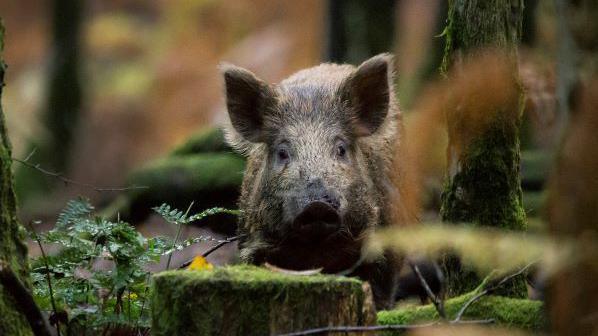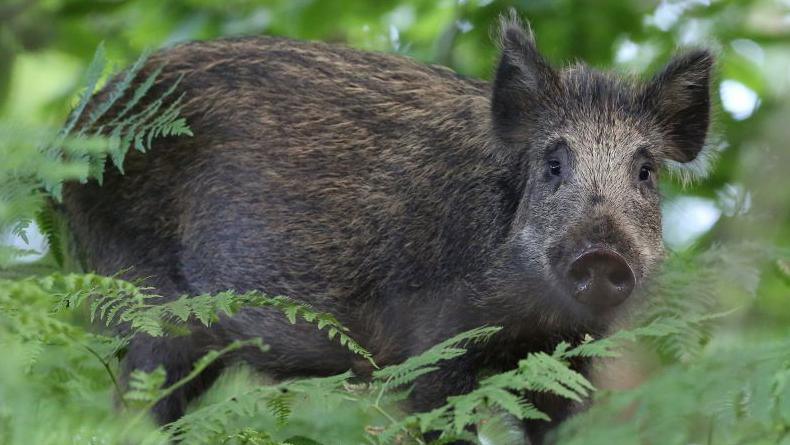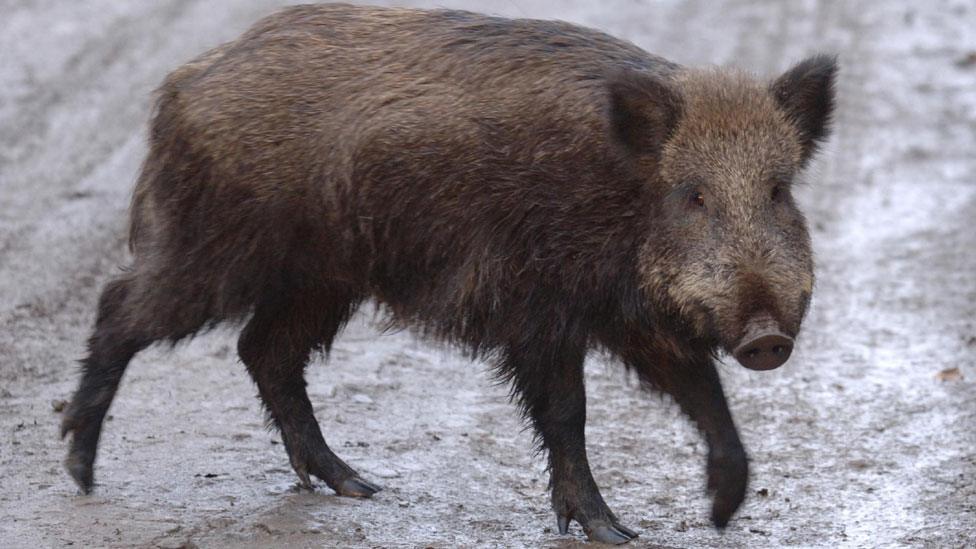Feral pig numbers could rise in Scotland - experts

- Published
Feral pigs have become well established in Scotland and could quickly increase in numbers, say experts.
They are a mix of wild boar and domestic pigs, and include escapees and animals illegally released into the wild.
Public bodies NatureScot and Forestry and Land Scotland (FLS) plan to hold events for land managers to share best practice in feral pig control.
The pigs' rooting behaviour can be beneficial to some woodland habitats, but damaging to farmland and gardens.
NatureScot said it was not known how many pigs were roaming free in Scotland.
FLS said there were four well-established populations in Dumfries and Galloway, Glenmoriston, near Fort Augustus, and in Wester Ross.
It added people had also reported small numbers in other rural areas.
The pigs' rooting up of vegetation and soil to unearth roots and insects can aid woodland regeneration by breaking up dense undergrowth and clearing the ground for native tree seedlings.
But FLS and NatureScot said the pigs could damage grazing land and crops.
Kieran Watson, a wildlife ranger with FLS, told BBC Radio Scotland's Out of Door's programme: "The impact looks like a sizeable excavator has been through a field doing some drainage or other ground work.
"They seem quite capable of turning over stone and large logs in a space of a couple of hours so it is bare earth."

Wild boar have fewer young than Scotland hybridised feral pigs
Mr Watson said wild boar could have four to six piglets per sow, but due to hybridisation with domestic pigs the number of feral pig young could rise to 18 per sow.
He added feral pigs could travel up to eight miles and were good swimmers, further raising concerns about the animals' ability to spread.
Morag Milne, of NatureScot, said the pigs looked like wild boar or spotty domestic pigs.
She added: "It's not necessarily well known, but there are well-established populations of pigs in Scotland.
"We don't know how many there are.
"There isn't any monitoring of populations, but best guess is low thousands.
"If not controlled they are likely to increase in numbers."
Related topics
- Published14 July 2022

- Published19 July 2016
